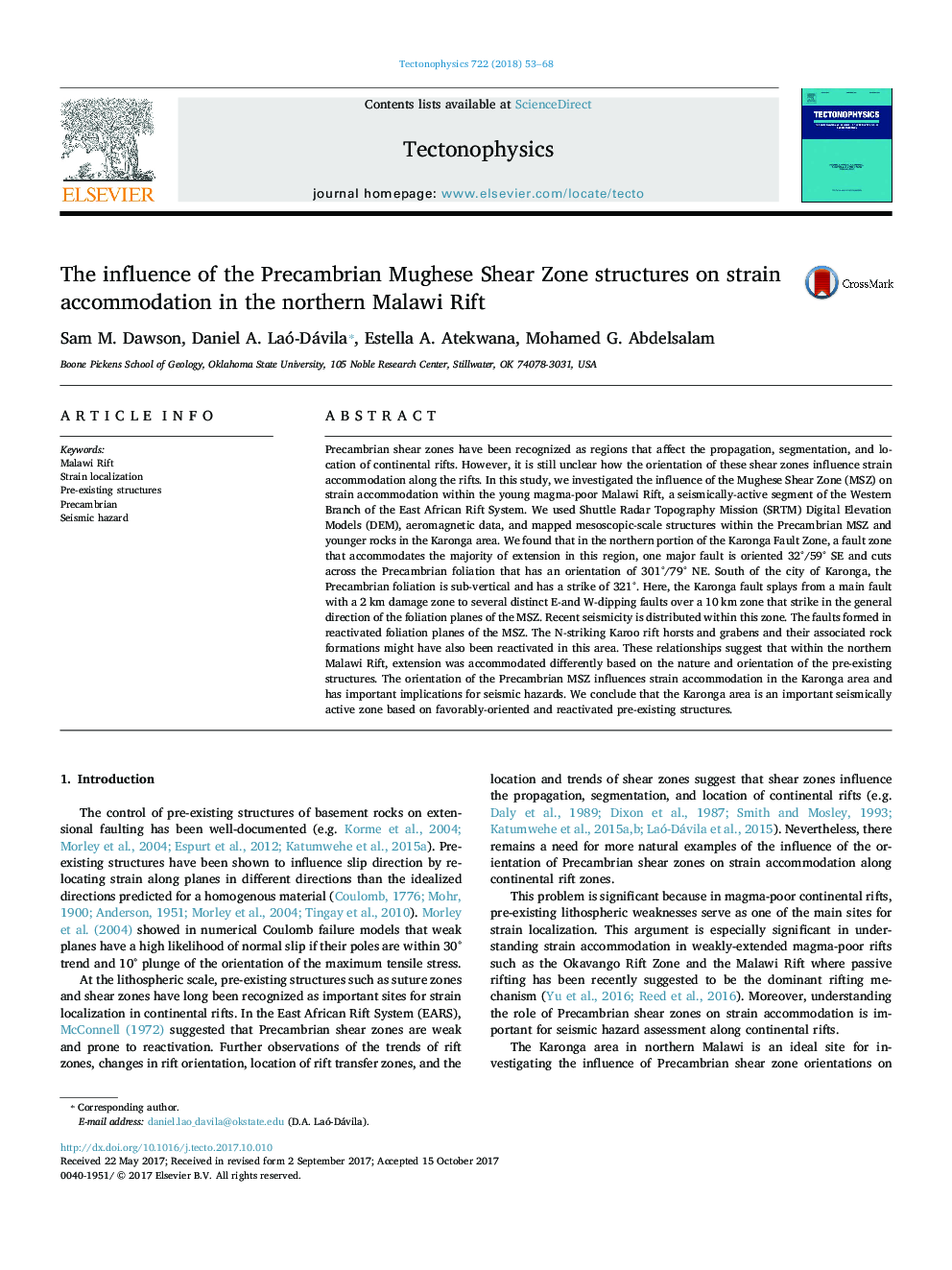| کد مقاله | کد نشریه | سال انتشار | مقاله انگلیسی | نسخه تمام متن |
|---|---|---|---|---|
| 8908807 | 1636687 | 2018 | 16 صفحه PDF | دانلود رایگان |
عنوان انگلیسی مقاله ISI
The influence of the Precambrian Mughese Shear Zone structures on strain accommodation in the northern Malawi Rift
دانلود مقاله + سفارش ترجمه
دانلود مقاله ISI انگلیسی
رایگان برای ایرانیان
کلمات کلیدی
موضوعات مرتبط
مهندسی و علوم پایه
علوم زمین و سیارات
فرآیندهای سطح زمین
پیش نمایش صفحه اول مقاله

چکیده انگلیسی
Precambrian shear zones have been recognized as regions that affect the propagation, segmentation, and location of continental rifts. However, it is still unclear how the orientation of these shear zones influence strain accommodation along the rifts. In this study, we investigated the influence of the Mughese Shear Zone (MSZ) on strain accommodation within the young magma-poor Malawi Rift, a seismically-active segment of the Western Branch of the East African Rift System. We used Shuttle Radar Topography Mission (SRTM) Digital Elevation Models (DEM), aeromagnetic data, and mapped mesoscopic-scale structures within the Precambrian MSZ and younger rocks in the Karonga area. We found that in the northern portion of the Karonga Fault Zone, a fault zone that accommodates the majority of extension in this region, one major fault is oriented 32°/59° SE and cuts across the Precambrian foliation that has an orientation of 301°/79° NE. South of the city of Karonga, the Precambrian foliation is sub-vertical and has a strike of 321°. Here, the Karonga fault splays from a main fault with a 2 km damage zone to several distinct E-and W-dipping faults over a 10 km zone that strike in the general direction of the foliation planes of the MSZ. Recent seismicity is distributed within this zone. The faults formed in reactivated foliation planes of the MSZ. The N-striking Karoo rift horsts and grabens and their associated rock formations might have also been reactivated in this area. These relationships suggest that within the northern Malawi Rift, extension was accommodated differently based on the nature and orientation of the pre-existing structures. The orientation of the Precambrian MSZ influences strain accommodation in the Karonga area and has important implications for seismic hazards. We conclude that the Karonga area is an important seismically active zone based on favorably-oriented and reactivated pre-existing structures.
ناشر
Database: Elsevier - ScienceDirect (ساینس دایرکت)
Journal: Tectonophysics - Volume 722, 2 January 2018, Pages 53-68
Journal: Tectonophysics - Volume 722, 2 January 2018, Pages 53-68
نویسندگان
Sam M. Dawson, Daniel A. Laó-Dávila, Estella A. Atekwana, Mohamed G. Abdelsalam,